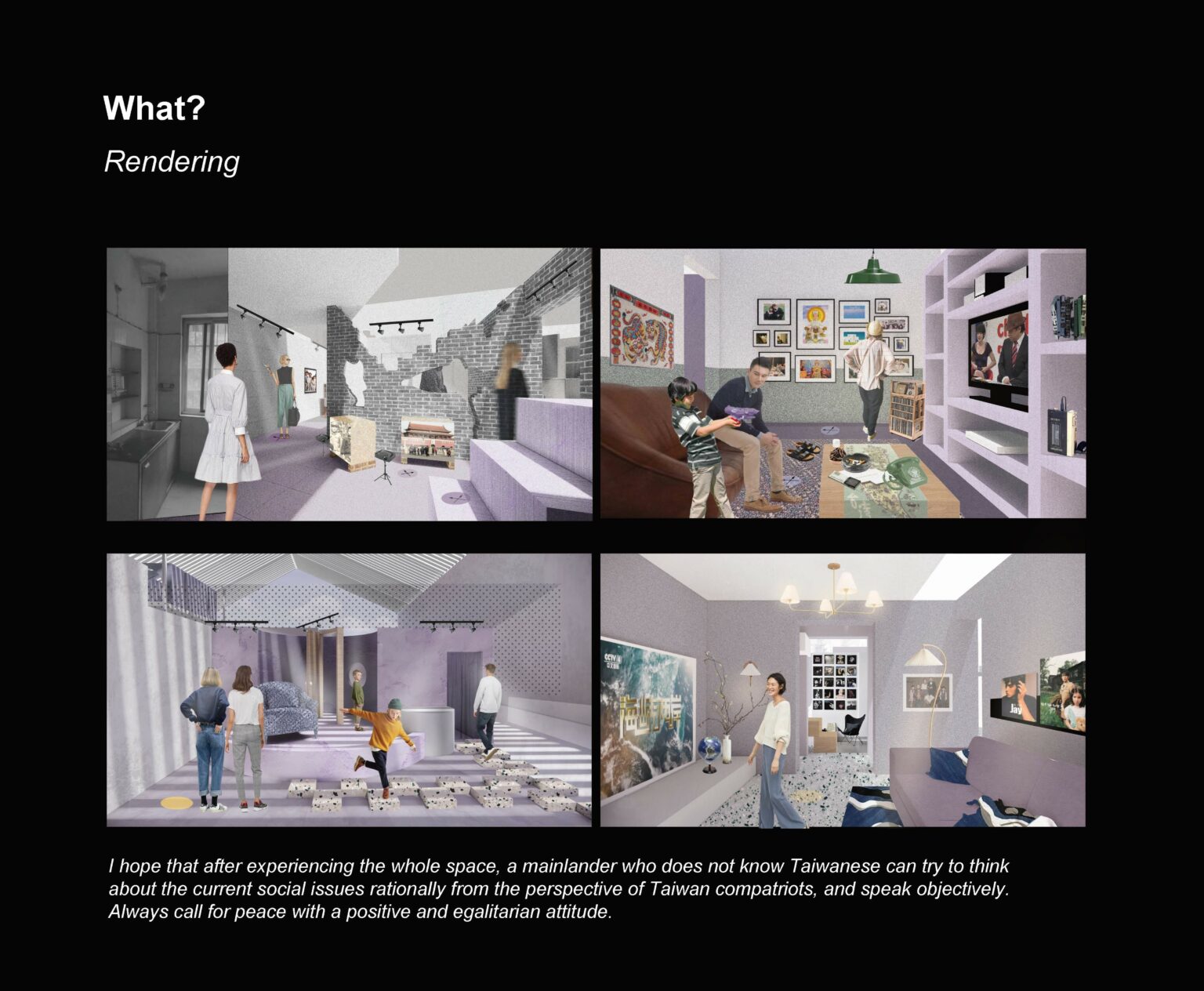Chuxuan Jiang (she/her)

Chuxuan Jiang, from China, completed her bachelor’s degree in exhibition design at Nanjing University of the Arts from 2016 to 2020 and participated in MDes interior design from 2021 to 2022 in The Glasgow School of art.
Based on her undergraduate studies in museums and exhibitions, her thinking on interior design often stems from history, humanities, and stories. She also enjoys exploring the interdisciplinary development of the interior design. In her final project, she is devoted to the integration of theatrical scenography and narrative interior design. She believes that an excellent spatial experience can lead people to think critically and be educational.
Projects

BORDERLINE
The project examined the problems encountered by “Taiwanese immigrants” in mainland china and explained how identity is described through migration. The main purpose is trying to alleviate the pressure and confusion brought by the two social realities to this group of people and help people on both sides of the Strait achieve a deeper understanding. Data were collected via survey from a typical Taiwanese family and mainlanders and Taiwanese associated with this family.
In the way of creating a script, the text narrates many of the scenes the family experiences and translates the script into an interactive theatrical space through the theory of narrative scenarios. It was found that this group to which this family belongs is neither entirely Taiwanese nor entirely mainland. The confusion of their sense of belonging is also created by the current social environment.
The turbulent political situation on both sides of the strait, the hidden danger of war, the pressure of public opinion, and cyber violence, putting this group of people in a unique social position. It is hoped that by experiencing the entire narrative drama space, mainlanders can let go of their prejudices and try to understand this group, and for Taiwanese living in the mainland, they can gain empathy and a sense of belonging in an unfamiliar environment. Theoretical and practical implications of the results are discussed.

After spending six years with my Taiwanese boyfriend, I got to know many people like him who immigrated to the mainland. He moved to Kunshan, a city near Shanghai with his parents since he was a child. There are many "immigrants" like him in several cities in China. The city Kunshan is one of the base of "Taiwanese immigrants". Information were collected via survey from a typical Taiwanese family and people associated with this family. In later designs I will use the experiences of these characters to construct narrative scenes.

I will construct the narrative space by sorting out the nodes where the important consciousness of the selected characters is formed. For example, Tony was curious about his identity when he was 5 to 8 years old, why didn't his parents speak the same language to other people? Why is the program broadcast in his house different from that of other children's houses? These awakening moments of consciousness all occurred in his own home, so the home became an important place of occurrence. In this scene, I'll extract the scene space based on Tony's movement in the house. He probably spent a lot of time in the living room watching TV during this time, and he often eavesdropped on conversations between parents and other adults in the garden. These are the key factors that affect the formation of his consciousness.

This is the process of forming the consciousness of the two main characters, listing the scenes of events that have a great impact on them. I came up with the initial protagonist scene space in the order of events. Referring to the expression method of the Dreams have no title project, the scenes are connected according to the characters' experiences to form a series of narrative senario spaces.

In the scenes of the protagonists (Tony & Leslie), some scenes are to compare the experiences of the two people at the same age in different environments. We can find the imprint of that era in two families from different backgrounds from the contrast of interior styles and elements in the scene. The main purpose is to allow visitors from the mainland and Taiwan to exchange identities and enter each other's living environment.










